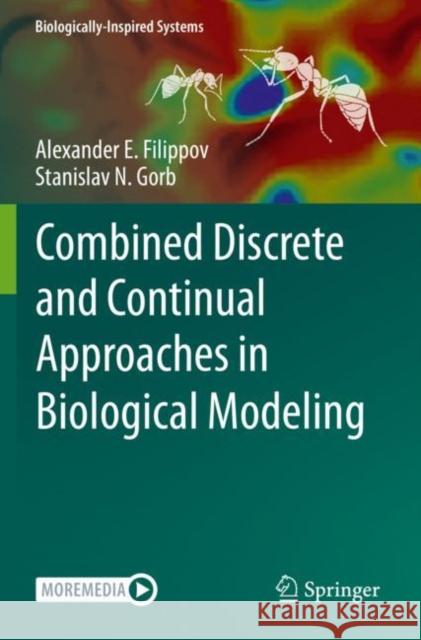Combined Discrete and Continual Approaches in Biological Modelling » książka



Combined Discrete and Continual Approaches in Biological Modelling
ISBN-13: 9783030415303 / Angielski / Miękka / 2021 / 317 str.
Combined Discrete and Continual Approaches in Biological Modelling
ISBN-13: 9783030415303 / Angielski / Miękka / 2021 / 317 str.
(netto: 420,71 VAT: 5%)
Najniższa cena z 30 dni: 424,07
ok. 22 dni roboczych.
Darmowa dostawa!
"The book is generously illustrated with both black-and-white and color figures; it has a useful list of references and a detailed index. The monograph is a valuable contribution to existing literature and would be of interest for researchers working in related areas. The book promotes novel ideas regarding self-organization and dynamics of complex biological systems and suggests new approaches to mathematical modeling of such systems leading to a better understanding of the living nature around us." (Yuriy V. Rogovchenko, Mathematical Reviews, January, 2023)
"The expository style adopted in the book is quite unique ... . Each chapter begins with an abstract, which prepares the reader to better absorb the mathematical details that follow. The chapters are quite self-contained and can be read independently. ... The book is suitable for undergraduate mathematical sciences and engineering students who will benefit from learning ... core physical principles. The wide variety of examples could be beneficial to the quantitative-minded biology students and the advanced researchers as well." (Wasiur Rahman Khuda Bukhsh, zbMATH 1478.92002, 2022)
Chapter 1. Introduction.- Chapter 2. Various methods of pattern formation.- Chapter 3. Clusterization of biological structures with high aspect ratio.- Chapter 4. Contact between biological attachment devices and rough.- Chapter 5. Anisotropic friction in biological systems.- Chapter 6. Mechanical interlocking of biological fasteners.- Chapter 7. Biomechanics at the microscale.- Chapter 8. Nanoscale pattern formation in biological surfaces.- Chapter 9. Ecology and evolution.
Basic laws of nature are rather simple, but observed biological structures and their dynamic behaviors are unbelievably complicated. This book is devoted to a study of this “strange” relationship by applying mathematical modeling to various structures and phenomena in biology, such as surface patterns, bioadhesion, locomotion, predator-prey behavior, seed dispersal, etc. and revealing a kind of self-organization in these phenomena. In spite of diversity of biological systems considered, two main questions are (1) what does self-organization in biology mean mathematically and (2) how one can apply this knowledge to generate new knowledge about behavior of particular biological system? We believe that this kind of “biomimetics” in computer will lead to better understanding of biological phenomena and possibly towards development of technical implications based on our modeling.
1997-2026 DolnySlask.com Agencja Internetowa
KrainaKsiazek.PL - Księgarnia Internetowa









